
|
|
|
|
|
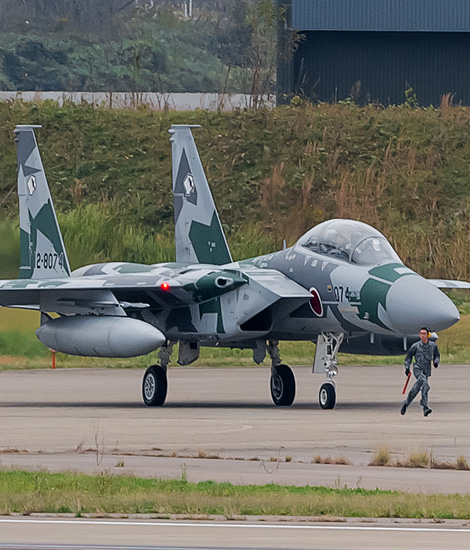
|
The Choice for the F-15J Eagle; Komatsu, October 29, 2019
Eagles for the Air Defense, part 1; Text and Photograph's by Alex van Noye
The Mitsubishi F-15J Eagle is a frontline combat aircraft that can be used in all weather conditions. The aircraft is based on the design of the American F-15 Eagle and is used by the Japan Air Self Defense Force. The F-15J for the Japanese Air Force was produced under license by Japanese Mitsubishi Heavy Industries.
The F-15J Eagle is the primary air defense fighter in Japan and is therefore the backbone of Japanese defense. The Japan Air Self Defense Force (JASDF) opted for the F-15 Eagle which is being built in the United States by the McDonnell Douglas Corporation. The American version of the F-15 is referred to as the F-15C/D Eagle. The Japanese version, the F-15J/DJ Eagle, is in conformity with the United States government built under license in Japan and contains all Japanese specifications for such an aircraft. Most Japanese F-15s were built under license by the Japanese company Mitsubishi Heavy Industries. The JASDF received a total of 165 F-15J aircraft and 48 F-15DJ aircraft with space for two pilots. A total of 213 aircraft were therefore built for the JASDF of this type. Japan is therefore the second largest buyer of the F-15 Eagle after the United States Air Force. Japan flies with more than 60% of the Eagles in the world that are not built for the American USAF. On March 31, 2019 (end of Japanese Tax year 2018), there were still 201 F-15J/DJ Eagles in use at the JASDF. That alone is a remarkable achievement, because the F-15 has been used by the JASDF for more than 30 years. The F-15 has undergone various modifications over the years, making the planes still very formidable weapons for the JASDF. The aircraft has been the main deterrent to Japanese air defense for more than 30 years. There is no significant difference between the JASDF and the USAF F-15s in appearance. The main features are the JASDF roundel (Hinomaru), the color of the aircraft and the antennas related to electronic warfare.
The choice for the F-15 Eagle was a result of the selection program of the third FX study. The budget proposal for the following year was submitted in 1974 (Showa 49) and included the third FX research costs for the successor of the Lockheed F-104J/DJ Starfighter and the oldest Mitsubishi F-4EJ Phantom IIs. The F-104J/DJ Starfighter was the most important interceptor of the Japanese Air Force at that time. The
|
|
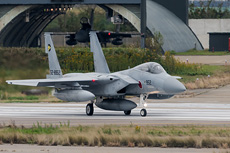
|
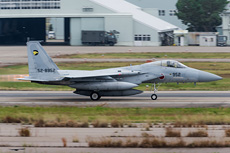
|
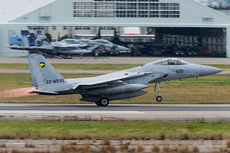
|
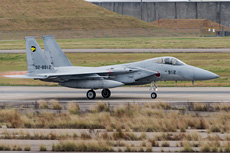
|
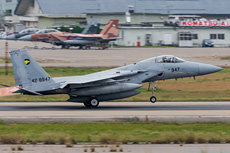
|
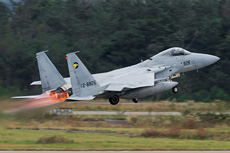
|
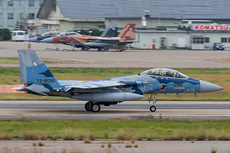
|
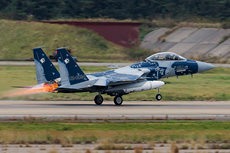
|
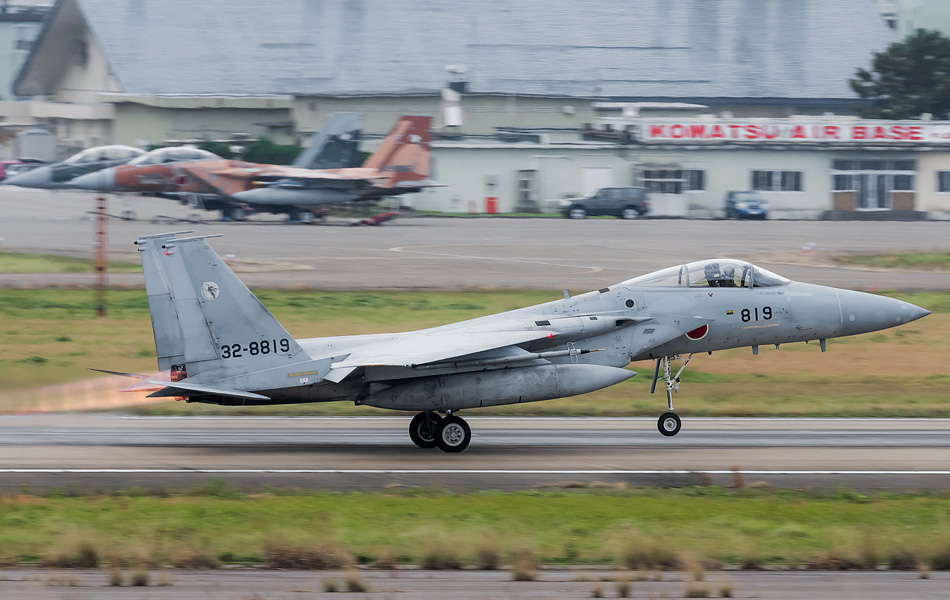
|
Starfighters are now very outdated and are notorious in Europe in particular for the many accidents with the type. The selection work for a good successor for these aircraft started in 1975 (Showa 50). The research was limited to 13 different types. The most important candidates, were; the American Grumman F-14 Tomcat, the American McDonnell Douglas F-15Eagle, the American General Dynamics F-16 Fighting Falcon, the American Northrop F-17, the French Dassault Mirage F1, the Swedish Saab J-37 Viggen and the Tri-National Panavia Tornado IDS. For these seven models, a study team was appointed by the Defense Agency. In 1976, the F-14 Tomcat, the F-15 Eagle and the F-16 Fighting Falcon were selected as candidates to replace the F-104 Starfighter fleet and part of the F-4 Phantom fleet based on the research results. It is striking that soon all European planes dropped out and only all American fighters remained in the race. Only the F-17 dropped out, because this type had also lost the competition to the F-16 Fighting Falcon in America.
The research team continued with the three remaining candidates. Soon the F-16 Fighting Falcon would also lose the competition. This type was a fighter aircraft developed for the short distance and could only be used during daytime. The requirement of the JASDF was to also be able to use aircraft at night and therefore only the F-14 Tomcat and the F-15 Eagle were left in the choice. The F-14 and the F-15 were almost equivalent aircraft at that time. However, the research team noticed that the F-15 was much more agile during air combat, making this aircraft superior. The initial choice for the third FX project would therefore be the McDonnell Douglas F-15 Eagle if it was up to the team. At the end of 1976, it was decided to postpone the decision to purchase to the next fiscal year because of the limited budgets for the current year that were left. On May 10, 1976, the "5th International Air Show" was held at Iruma Air Base where both the F-14 Tomcat and the F-15 Eagle would fly a demonstration. At this time, the FX selection work was almost completed and the introduction of the F-15 in Japan was almost certain. Grumman sought a last chance and brought a Tomcat from the American aircraft carrier Enterprise that was off the coast of Japan in the Pacific Ocean. The United States Navy had already received the F-14A Tomcat in operational service and was happy to demonstrate this in favor of the type and Grumman.
After a period of hard work, the decision was made on December 28, 1977. With input from the FX research team and the JASDF, the Japanese government formally decided that the F-15 Eagle would become the newest JASDF fighter aircraft. The United States designated the F-15 Eagle implementation plan as the "Peace Eagle Project". As part of this plan, a licensing agreement was soon signed with Mitsubishi Heavy Industries and McDonnell Douglas for the construction of the F-15J/DJ Eagle in Japan. This license contract was signed by all parties on March 29, 1978. The first budget released in Japan included the purchase of a first series of 23 aircraft for the JASDF. In April 1978, a production announcement was immediately issued by the Japanese government. A Japanese engineer was sent to the McDonnell Douglas plant in St. Louis. Starting up the Japanese production line was not a simple process. To help the Japanese, 40 engineers from the United States were sent to Mitsubishi to share their knowledge there. However, the first F-15s for the JASDF would be supplied by the McDonnell Douglas plant. In July 1980, the first F-15J Eagle was transferred to the JASDF. The first Japanese F-15 arrived in Japan at the American airbase Okinawa Kadena Air Base on March 1, 1981. Since this first delivery, the F-15 has become the most important fighter plane at the JASDF. Now more than 40 years later, the F-15J/DJ Eagle has proven that they made the right choice in the interests of Japan at that time.
|
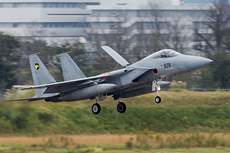
|
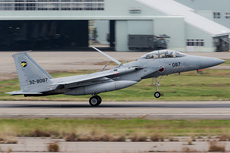
|
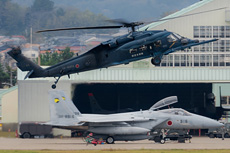
|
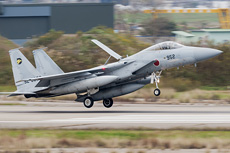
|
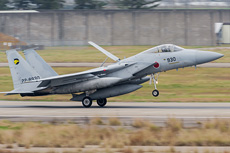
|
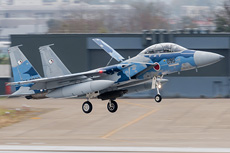
|
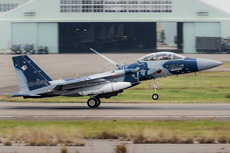
|
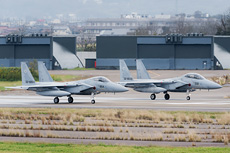
|
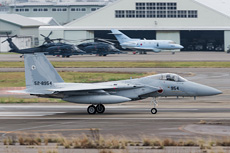
|
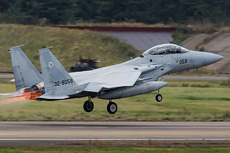
|
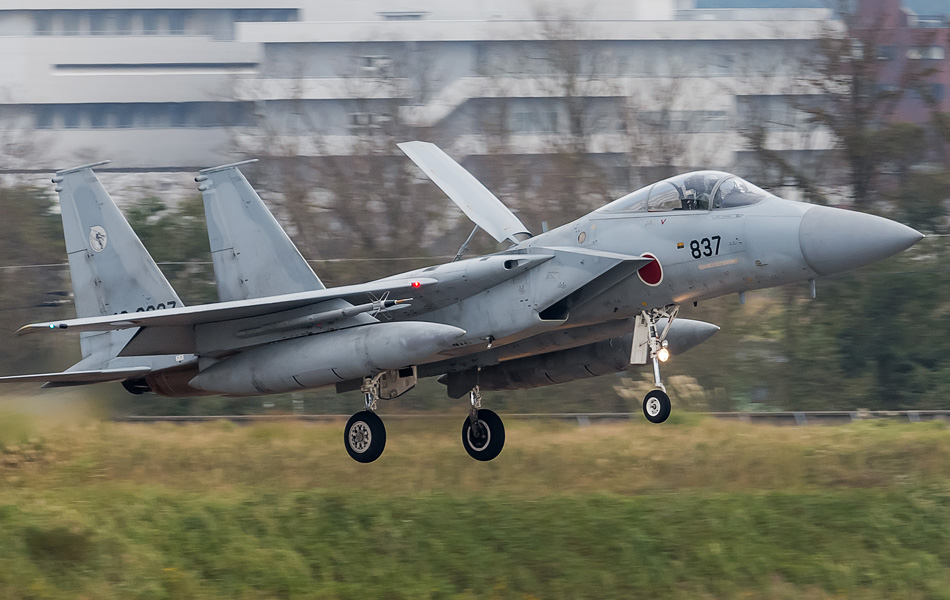
|
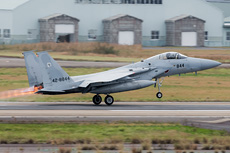
|
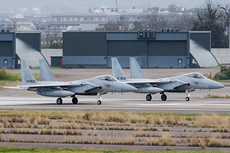
|
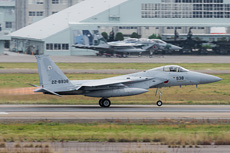
|
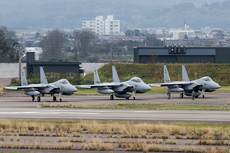
|
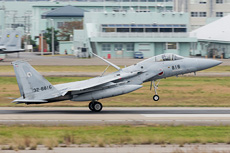
|
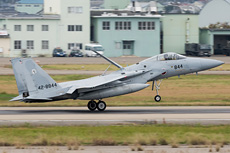
|
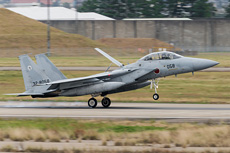
|
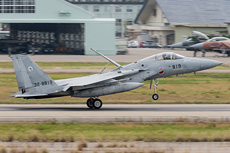
|
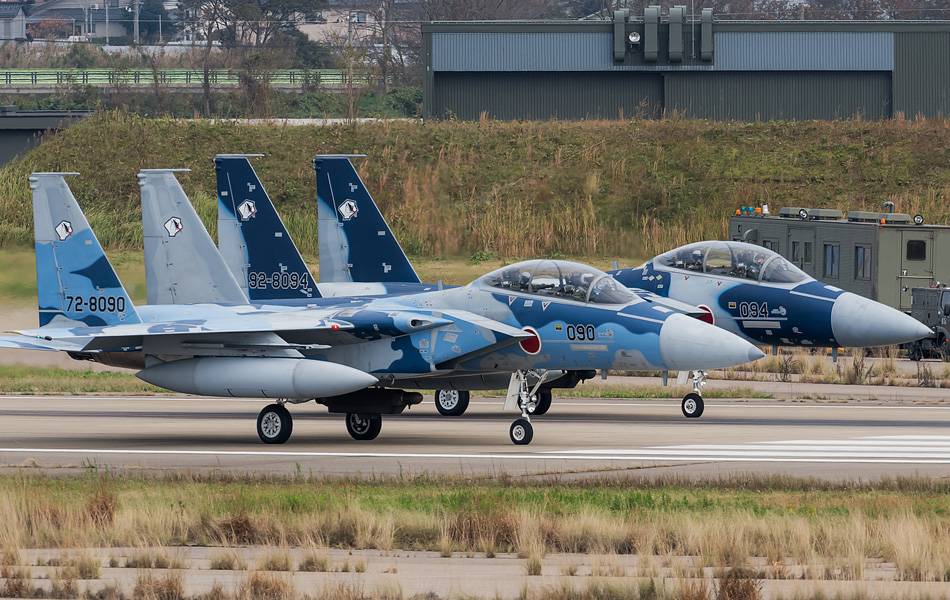
|
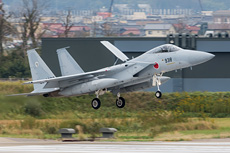
|
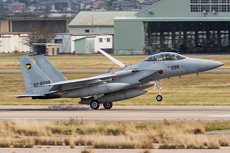
|
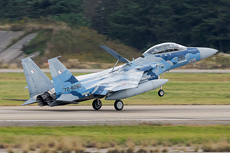
|
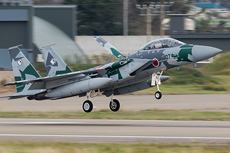
|
|
|

|







